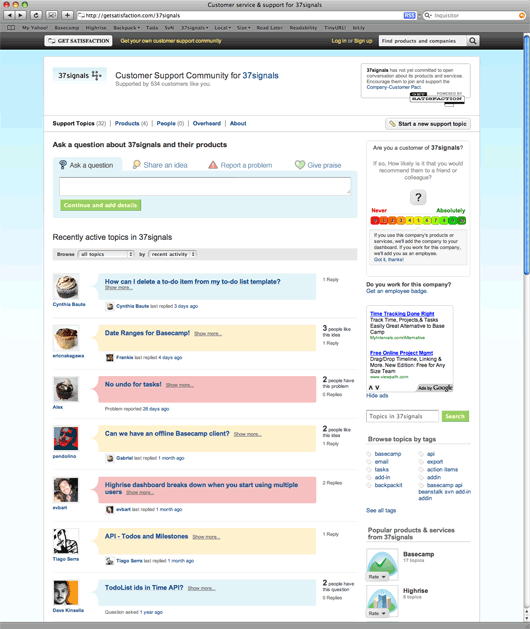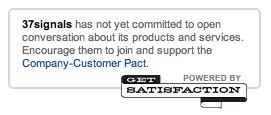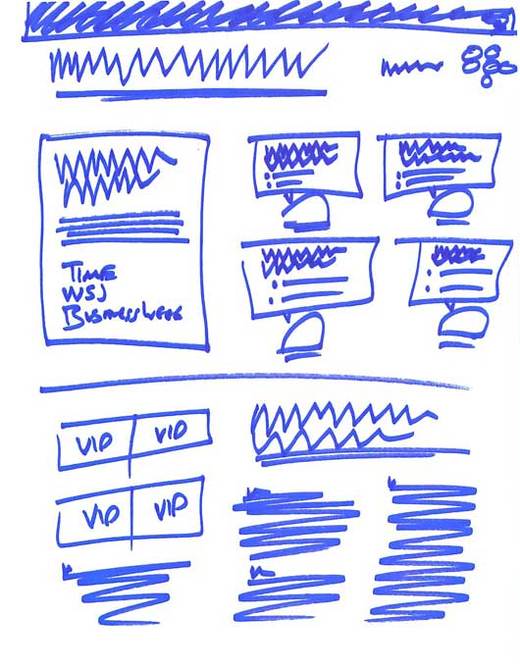Get Satisfaction, a third-party customer service app/community, allows customers to offer feedback, make suggestions, get their questions answered, and generally get help with a product or service.
A good idea
Building support/community infrastructure is a pain point for a lot of companies. The help section, forums, FAQs, and whatever else you have to build to offer comprehensive customer support is a big undertaking. It’s often the last thing you want to do after you’ve just worked for months on a product or service.
So for those companies that would prefer to outsource this infrastructure to a third party, or use an alternative sanctioned support outlet in addition to their own, Get Satisfaction is a handy service.
But…
But if you prefer to provide great support on your own site with your own forums and your own help section and your own feedback mechanisms and your own FAQs, well, Get Satisfaction doesn’t play fair.
If you fail to subscribe to Get Satisfaction’s way of doing things, Get Satisfaction suggests to your customers that you’re “not yet committed to an open conversation.” That’s unfair and unreasonable. Just because we don’t team up with Get Satisfaction it doesn’t mean we’re not committed to an open conversation.
They make something look official that is not official

A screenshot of the 37signals Get Satisfaction page…which we have nothing to do with.
That’s not the only shady area for Get Satisfaction. The site also hosts, without permission, company support pages for over 14,000 companies. They’ll use your logo, title the page “Customer service & support for [COMPANY NAME HERE]” and generally make it feel like an officially sanctioned place to get official support from the company in question. The problem: It’s not official at all. That’s misleading.
The heavy handed tactics used by Get Satisfaction seem to indicate that their long term plan is to own every company’s customer support experience – whether it has your permission or not. Google searches for “[COMPANY NAME] support” will end up linking people to a Get Satisfaction page. If that’s not the offical support home for that company, who winds up winning? It’s not the company. It’s not the customer. It’s really only in the best interest of Get Satisfaction.
They also have a certificate-like customer-company pact agreement that they’d like you to sign. And if you don’t, they’ll make an outlandish claim about your lack of commitment to your customers. Here’s an image they put on our company page on the Get Satisfaction site:

Can you believe that language? “37signals has not yet committed to open conversations about its products or services.” WHAT?! We haven’t committed to open conversations about our products or services because we haven’t signed Get Satisfaction’s pact on Get Satisfaction’s site which generates Get Satisfaction’s income? That’s awfully close to blackmail (or a shakedown or a mafioso protection scheme).
Continued…










